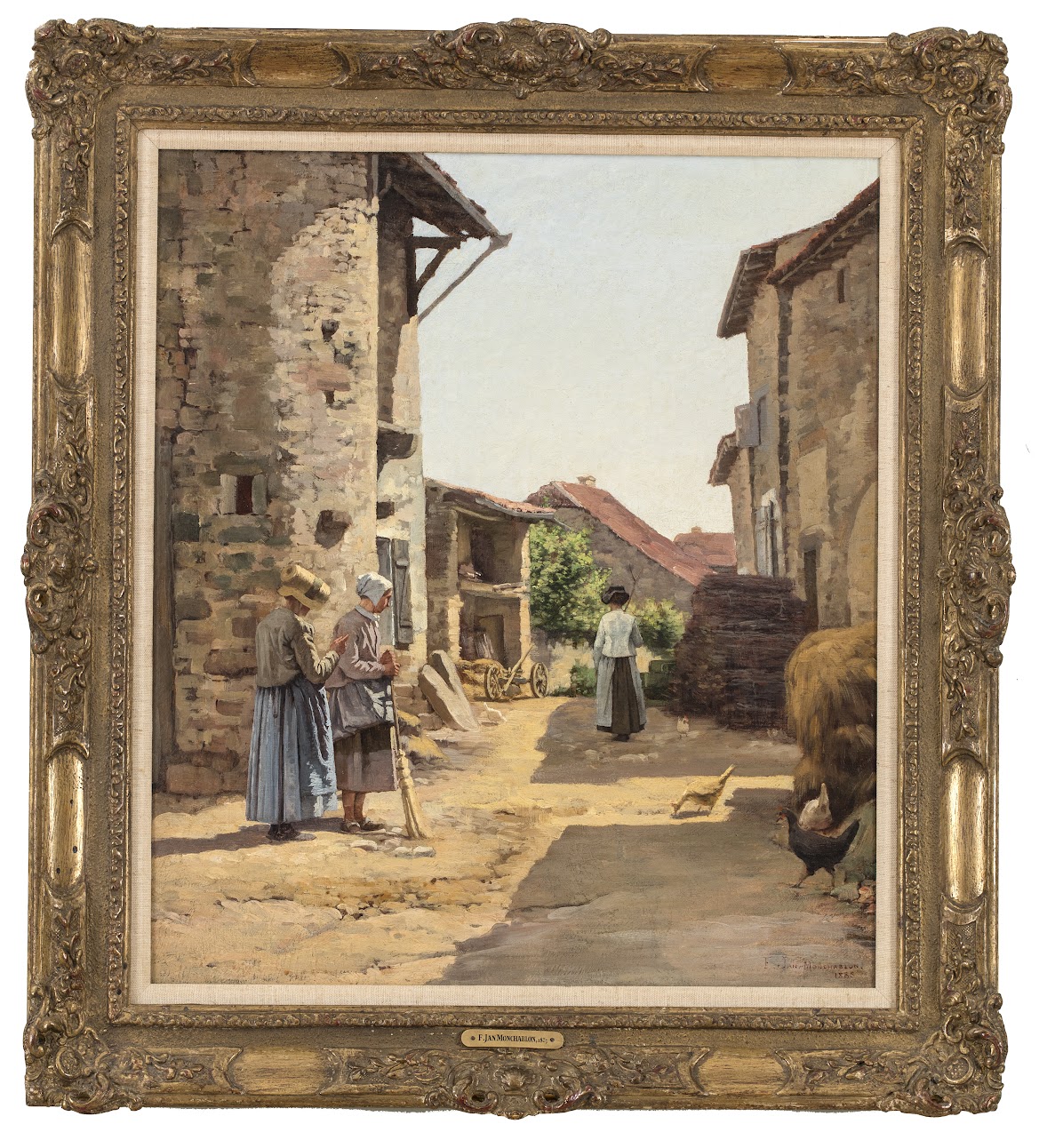Jean Baptiste Ferdinand Monchablon, better known as Jan Monchablon, was born on September 6, 1854, in Châtillon-sur-Saône. The son of Claude Ferdinand Monchablon, a health officer, he grew up in an environment that combined culture and tradition.
Monchablon pursued his studies at the Notre-Dame College in Nantes, where he developed his talent for art. In 1875, he became a teacher in Quimper, but his passion for painting led him to continue his artistic education. In 1881, he entered the École des Beaux-Arts in Paris, where he learned alongside great masters such as Jean-Paul Laurens and Alexandre Cabanel.
Drawn to the painting of the Flemish masters, Monchablon traveled to Leiden, Netherlands, in 1886. It was there that he refined his style and became a master in the representation of landscapes. His works are characterized by striking realism, capturing the beauty of nature and the rural life that surrounded him.
The artist often returned to Châtillon-sur-Saône, finding inspiration for numerous paintings, particularly scenes of rural life and local landscapes. His works, such as “Bords de l’Apance à Châtillon” and “Amoureux près du puits,” reflect a deep connection to his home environment.
In 1886, at the Salon of Nancy, Monchablon presented a painting titled “Philosophe,” which was well-received by critics. Additionally, he received several medals at the Universal Expositions. It was in the United States that he gained greater recognition, with several of his paintings housed in museums in New York, Cleveland, and Milwaukee.
Jean Baptiste Ferdinand Monchablon passed away on October 2, 1904, in Châtillon-sur-Saône. His friend and American art dealer Roland Knoedler erected a monument in his memory in 1909, which included a bronze bust created by the sculptor Antoine Bourdelle.

Sign up to the newsletter and stay informed about our latest acquisitions and exhibitions:
© Galerie Rousset 2023